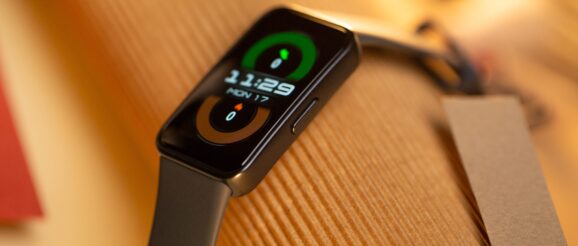Huawei Band 8 Review: A Missed Opportunity for Innovation | nextpit

Features and tracking
The Huawei Band measures heart rate and SpO2 level all the time, comes with 100 training modes, and does almost everything that a fitness tracker user would want it to. However, there are not many new tricks up its sleeves, and the sleep tracking is in accurate.
Pros:
Cons:
In the umpteenth generation, do we still have to talk about the fact that there is a music player, weather readouts, being able to locate your smartphone, and operating the phone’s shutter release remotely? Of course, all of those are possible with the Huawei Band 8. However, I struggle with a feature that I have previously used or at least tried with various devices: Sleep tracking!
“TruSleep 3.0 helps you sleep better,” Huawei promised. And yes, I think it was cleverly executed. A single swipe is enough, and you can tap on the moon icon to avoid any distractions in the form of sounds or vibrations. Sleep is then tracked using the standard values by distinguishing between light sleep, deep sleep, and the REM phase.
Upon waking up, you will get a report on your wristband that breaks down the collected data. Of course, you can view it in greater detail and in a more legible format via the Health app.
Unfortunately, the sleep tracking did not really work all that well or my sleeping habits are even worse than I thought. Last night, according to the app, I only slept for 3h 42min, and all of those were exclusively light sleep. Okay, that’s about how refreshed I feel, but it was a bit longer and I’m sure there were some deep sleep phases. The question now is whether the precise tracking fails if, for instance, you clumsily left podcasts playing all night long.
Apart from that, there are other well-known functions in terms of health: The blood oxygen level (SpO2) can be measured and monitored on a permanent basis if desired, as with the heart rate. In addition, you can count your steps, track calories, and view all these in dozens of views on your phone, but you can also receive the results on your wristband.
I cannot currently verify just how precise the health features are, apart from the very precise step tracking. As you know, the health data measured by your smart companion is not up to the standard one would expect from a doctor or medical professional anyway, so treat it only as a guide.
You also know the rest of the drill: Workouts are tracked, partly running and walking, automatically if you activate the feature. You are often referred to the Health+ in the smartphone app. If you want to do more than track your food intake, but also use the corresponding advice and training programs, you can do so after paying for a subscription in the app.
This would cost you €7.99 (around $9) each month. You can test it out for fun via a one-month trial before deciding whether the service is worth that amount of moolah each month. Of course, you can also cancel it anytime you like.
Finally, I would like to knock on Huawei’s door and politely ask: My dear friends, where is the NFC support? You give the Huawei Band 8 this indispensable feature, especially when it comes to making payments, but only for China? Is such a move still possible? GPS has also not yet found its way onto the Huawei Band 8, so you still have to rely on your smartphone for precise tracking of your workouts.
Yes, I am certainly making exceptions for a device that costs only $65 each. But are all those features truly too expensive to implement in a global model? Hopefully not in the future!
